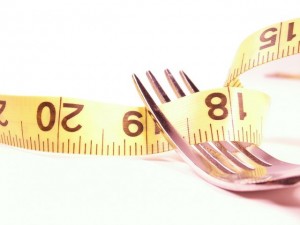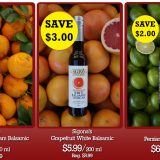New Year, New You: Part 1 | Eating Well to Lose Weight

Geri Wohl, CNC
Better Eating Coach
Written By: Geri Wohl, CNC
www.bettereatingcoach.com
How are you doing on your New Year’s resolutions? Was losing weight or eating healthier part of your list? Starting this week, I will be writing a series on some simple changes to your diet and lifestyle to help lose those unwanted extra pounds permanently. Many diet books begin by stating that following their approach is a sure-fire way to lose weight. Even if you lose some weight via their methods, the problem becomes maintaining weight loss for the long term. I’ll help you on the path to continued success.
Let’s focus on a few simple changes that will become part of your normal routine. First, think about the foods you eat. Do you buy mostly vegetables and fruits or do you eat more packaged foods? Is your plate filled with meat and a small portion of some type of vegetable? By changing from processed to whole foods, we pack more nutrient density into our bodies. We’ll consume more vitamins, minerals and antioxidants by eating unprocessed foods like vegetables, fruits and legumes instead of foods from a box. More nutrients equal better health. In addition, eating whole foods support our body systems and typically are lower in calories than packaged products.
Choose unrefined foods as the foundation of your meals. Packaged foods are designed to be quick and make cooking easier. However, if you read the label, there are many ingredients that are manufactured in a lab instead of grown in or above the ground. To summarize Michael Pollen, if you can’t pronounce it, it isn’t real or something you necessarily want to feed your family. By opting for more whole foods that are fresh, local, seasonal and unrefined, you will reduce unnecessary food additives, colorings and preservatives from your diet. For more about eating whole foods, see my article, “Eating with the Seasons.” Typically, the healthiest foods to buy are located on the perimeters of the supermarket.
 Next look at what’s on your plate. Instead of meat or chicken being the centerpiece of your meal, fill up on more vegetables and whole grains. Visualize your plate divided into quarters. Fill half your plate with vegetables, one quarter with a healthy grain or starch and the last quarter with some type of animal or vegetable protein. By having more plant-based foods, you will obtain more nutrients and fewer empty calories. Another simple change is “eating with the rainbow”. On any given day try consuming vegetables with all the colors of the rainbow. By doing so, you will obtain a richer array of important micronutrients and antioxidants. For more about antioxidants, see my article, “Spice It Up.” Also, consume both raw and cooked vegetables. That’s how our bodies absorb a fuller complement of health-supporting nutrients.
Next look at what’s on your plate. Instead of meat or chicken being the centerpiece of your meal, fill up on more vegetables and whole grains. Visualize your plate divided into quarters. Fill half your plate with vegetables, one quarter with a healthy grain or starch and the last quarter with some type of animal or vegetable protein. By having more plant-based foods, you will obtain more nutrients and fewer empty calories. Another simple change is “eating with the rainbow”. On any given day try consuming vegetables with all the colors of the rainbow. By doing so, you will obtain a richer array of important micronutrients and antioxidants. For more about antioxidants, see my article, “Spice It Up.” Also, consume both raw and cooked vegetables. That’s how our bodies absorb a fuller complement of health-supporting nutrients.
Lastly, cut out added sugars. Many packaged or processed foods add sugar to their products. As you look at the food labels of the products you are purchasing, avoid products where sugar in any of its forms is one of the first four ingredients. Even foods that we don’t associate with sweets may have added sugar. Manufacturers confuse us by labeling sugar in many different ways. A product can seem harmless enough, but when you add up the various forms of sugar, you may be astounded. Some other forms of sugar include high fructose corn syrup, barley malt, dextrose, sucrose, fructose, maltodextrin, caramel and molasses to name a smattering. For more about ways to eat healthier and lose weight, contact me via my website. We’ll explore more about sugar in the next installment.
While losing weight does require planning and time in the kitchen, the results are well worth it for a healthier you in the New Year!
© Geri Wohl, CNC










